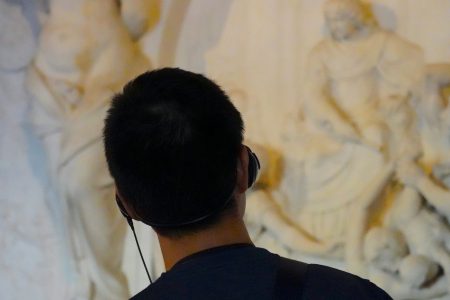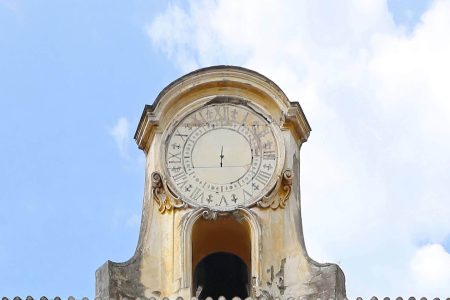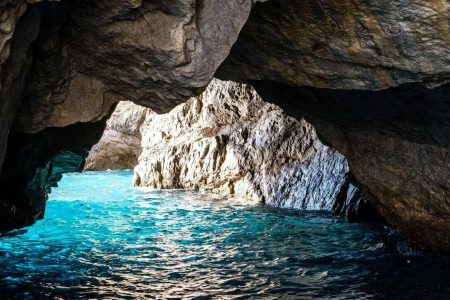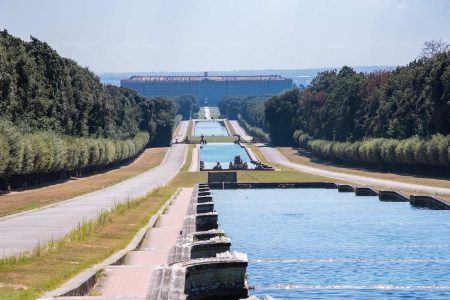Table of Contents
Discover the Reggia di Portici: Guided tours of history and wonder is the key to immersing yourself in a unique experience at the foot of Mount Vesuvius. This royal residence of the Bourbons encompasses art, nature and culture, but visitors often don't know how to take full advantage of the Reggia's potential. By reading this article you will find all the answers to planning the perfect visit, enhancing every historical, architectural and natural aspect of one of Italy's most fascinating jewels.
The unique history of the Palace of Portici
Erected in 1738 by order of Charles of Bourbon and his wife Maria Amalia of Saxony, the Palace of Portici is among the first royal residences in southern Italy. Attracted by the Duke d'Elboeuf's villa and the valuable natural resources of the place, the rulers decided to commission the great architects Luigi Vanvitelli and Ferdinand Fuga The design of a majestic palace.
The building, with its quadrangular plan and solemn facade, is famous for its monumental atrium, which was accessed through a fine iron gate supported by nine arches.
In the French period, Joachim Murat transformed some of its interiors with new luxury furnishings and refined decorative elements. Among the details most appreciated by visitors are the Louis XIV drawing room and Queen Maria Amalia's boudoir, with Capodimonte porcelain walls, a true masterpiece of Neapolitan decorative art.
The Royal Woods: nature and art in the Palace of Portici
One of the elements that distinguishes the Palace of Portici is its vast Royal Forest, formerly extended from the Pugliano area to the sea. The forest is divided into two zones: the upper part, dedicated to hunting, and the lower ornamental part, famous for avenues bordered by English gardens, scenic fountains and royal kiosks.
Here you can admire the Mermaid Fountain and the Swan Fountain, as well as the impressive Kiosk of King Charles. There was also no shortage of a real amphitheater and an innovative zoo with exotic animals, desired by Ferdinand IV.
Today this green area preserves an immense variety of Mediterranean flora, offering a true immersion in nature, just a few kilometers from Naples. In 1872, in the upper part of the park, Nicola Antonio Pedicino founded theBotanical Garden, thus also recognizing the site's scientific and educational significance.
You might be interested
Tour of the Royal Palace of Caserta by train from Naples: with or without audio guide
per person Book
Guided tour of the Palace of Portici
per person Book
Panoramic boat tour from Naples, Herculaneum, Portici, Torre del Greco to the island of Capri with stops by land
per person Book
Private guided tour of the Royal Palace of Caserta: discovering the Bourbon splendor
per person Book
Art and architecture: a journey into the details
The halls of the Palace of Portici were decorated by Joseph Bonito, a distinguished Neapolitan painter, while the sculptor Joseph Canart was in charge of the sculptural works made with Carrara marble, an element that lends exclusive elegance to the spaces. Among the must-see stops are:
- The Royal Guards Barracks, located on the left side of the courtyard
- The Palatine Chapel, refined place of worship
- The imposing staircase leading to the aristocratic apartments, including that of Caroline Bonaparte
In every room you can feel the history of a cosmopolitan court that profoundly influenced the art and culture of the Campania region.
Archaeological finds and the Herculaneum Museum
An experience in the Palace of Portici also allows us to relive the extraordinary season of the excavation of Herculaneum and Pompeii. From 1758 the Herculanense Museum was established within the palace, a celebrated collection of archaeological finds that attracted travelers from all over Europe and became a key stop on the Grand Tour.
The precious artifacts were transferred in the 19th century to the National Archaeological Museum of Naples, but the memory of that incredible heritage remains deeply tied to the Reggia and its pioneering role in the enhancement of ancient history.
Today: between agricultural faculty and experiential visits
Currently the Palace of Portici hosts the Faculty of Agriculture, Federico II University of Naples, maintaining a scientific vocation thanks to the Botanical Garden. Museums and educational spaces are also set up within the facility, attracting students and visitors from all over Italy each year.
Guided tours, often enhanced by temporary exhibitions and events, offer the chance to learn in depth about the stories, protagonists and curiosities of 18th-century court life.
- Discover the magnificence of the royal apartments
- Behold the botanical park and art installations
- Participate in educational workshops and family activities
Discover the Royal Palace of Portici: guided tour of history and wonder with Movery tour guide
Experience a fascinating experience among the halls and gardens of the beautiful Palace of Portici, a Bourbon residence nestled among history, art and nature. With a Movery tour guide, you will be able to retrace the life of the royal court, admire frescoes, discover curiosities about the Herculaneum Museum and stroll through the magnificent botanical park surrounding the Reggia. A journey into the heart of 18th-century Naples, ideal for those who love culture and the beauty of the area.
Contact us at 351 558 5067 or write to us at info@movery.it to receive a personalized quote Tailor-made for your group.





0 Comments